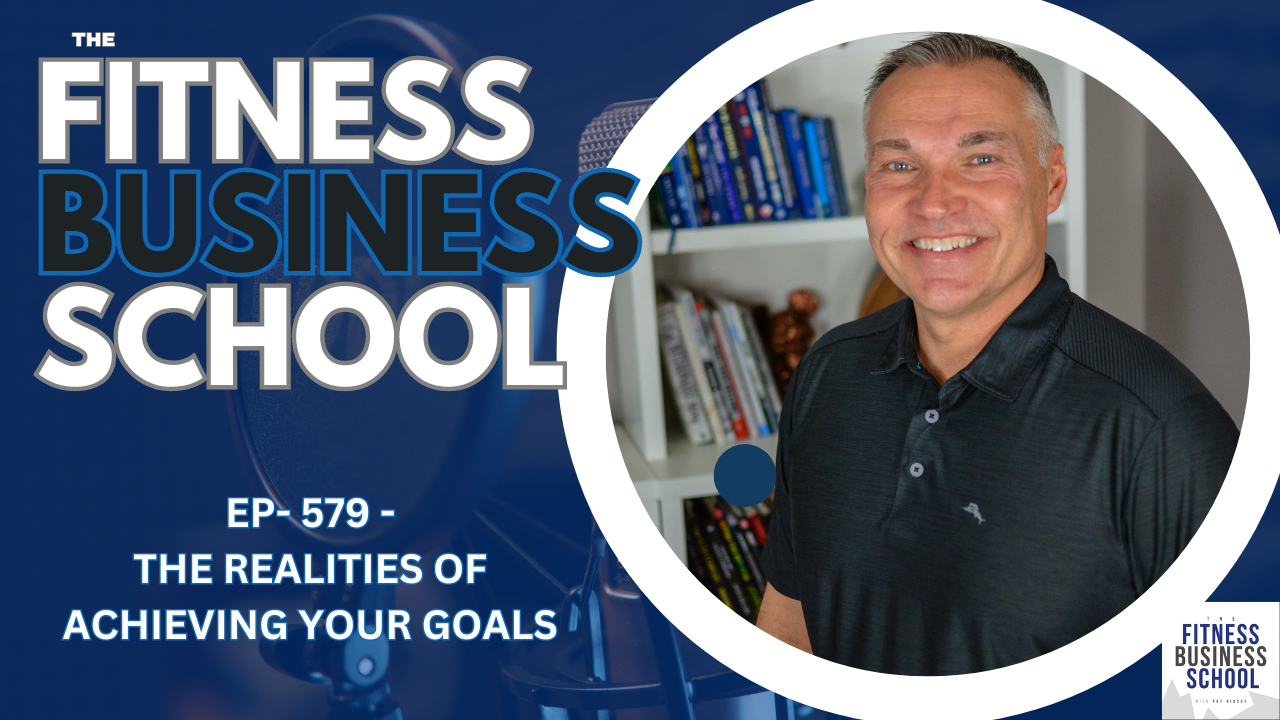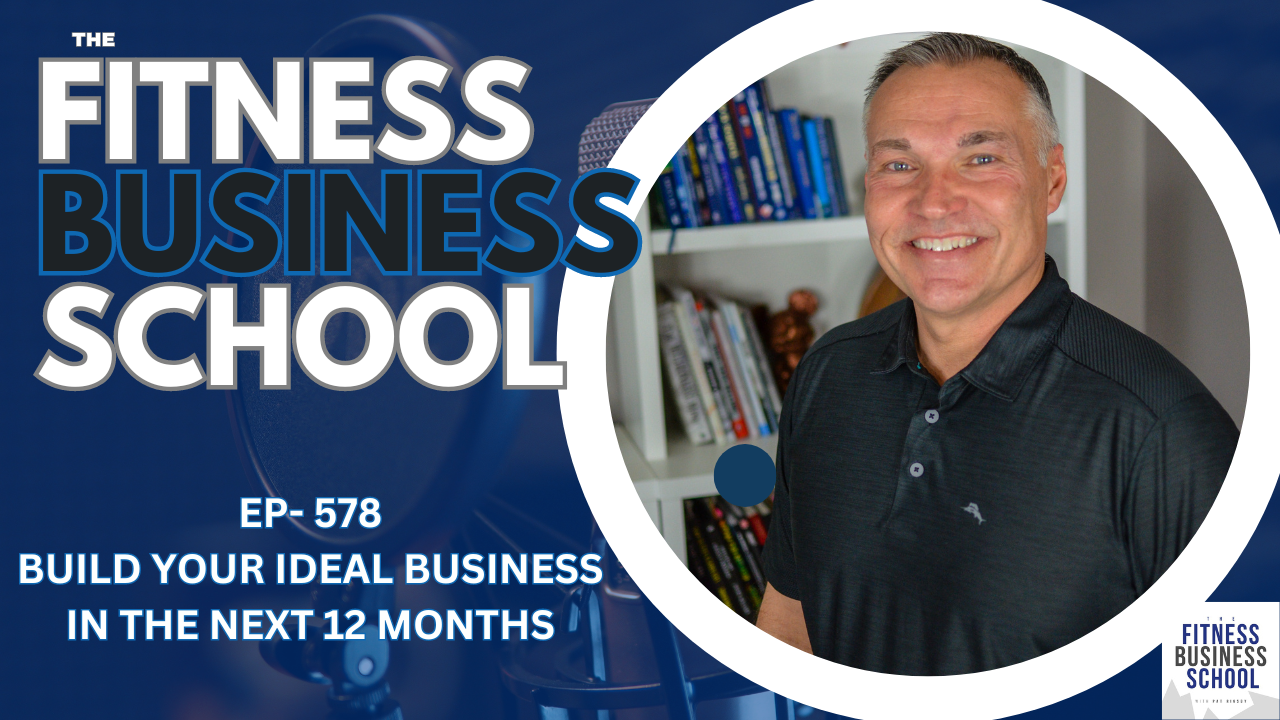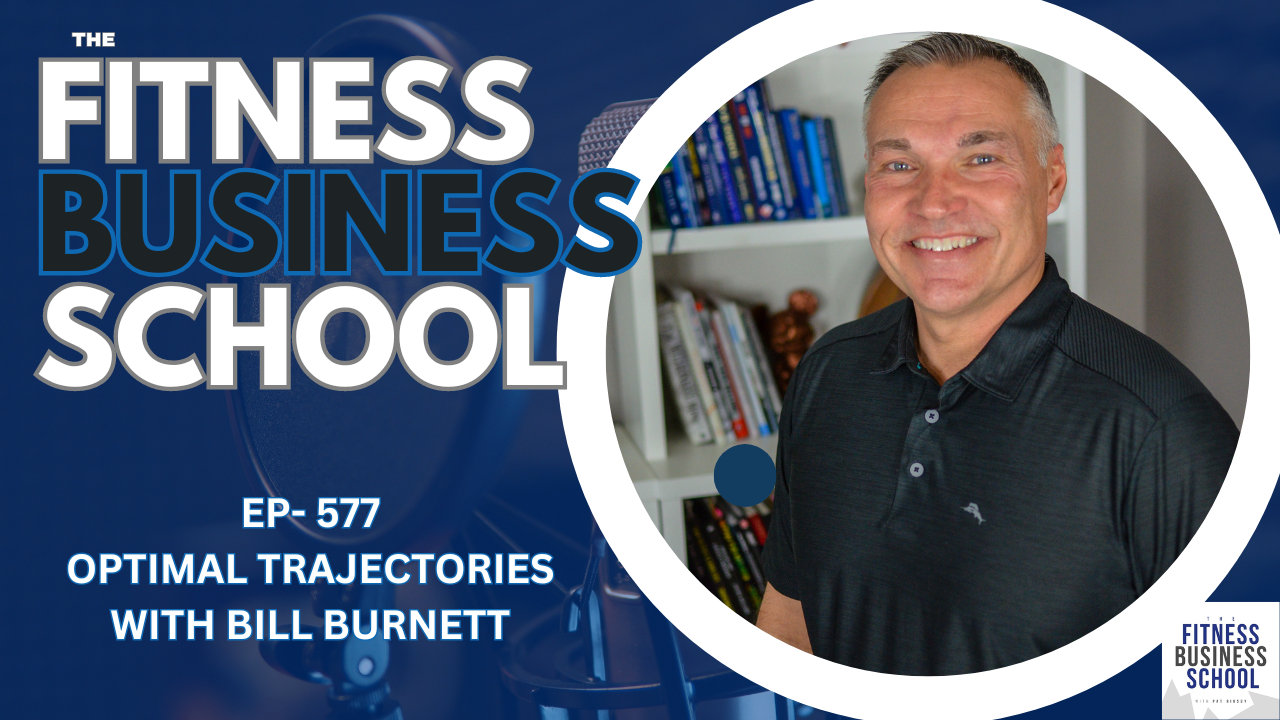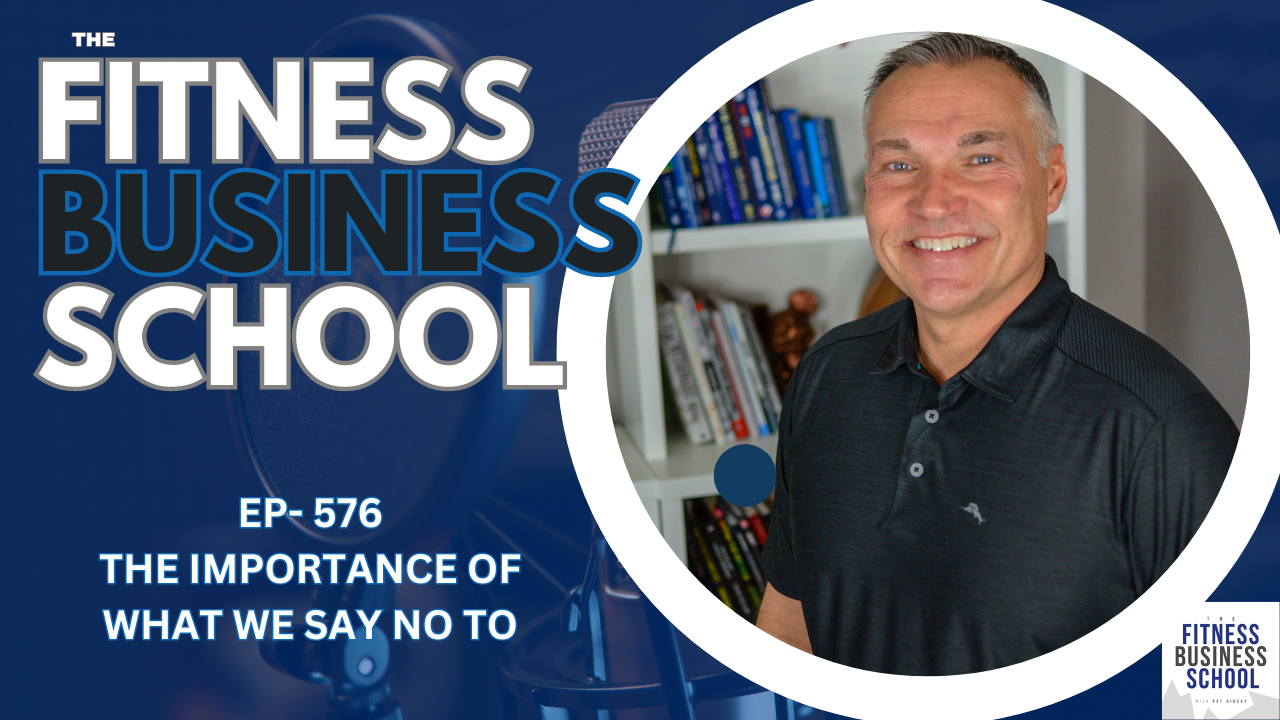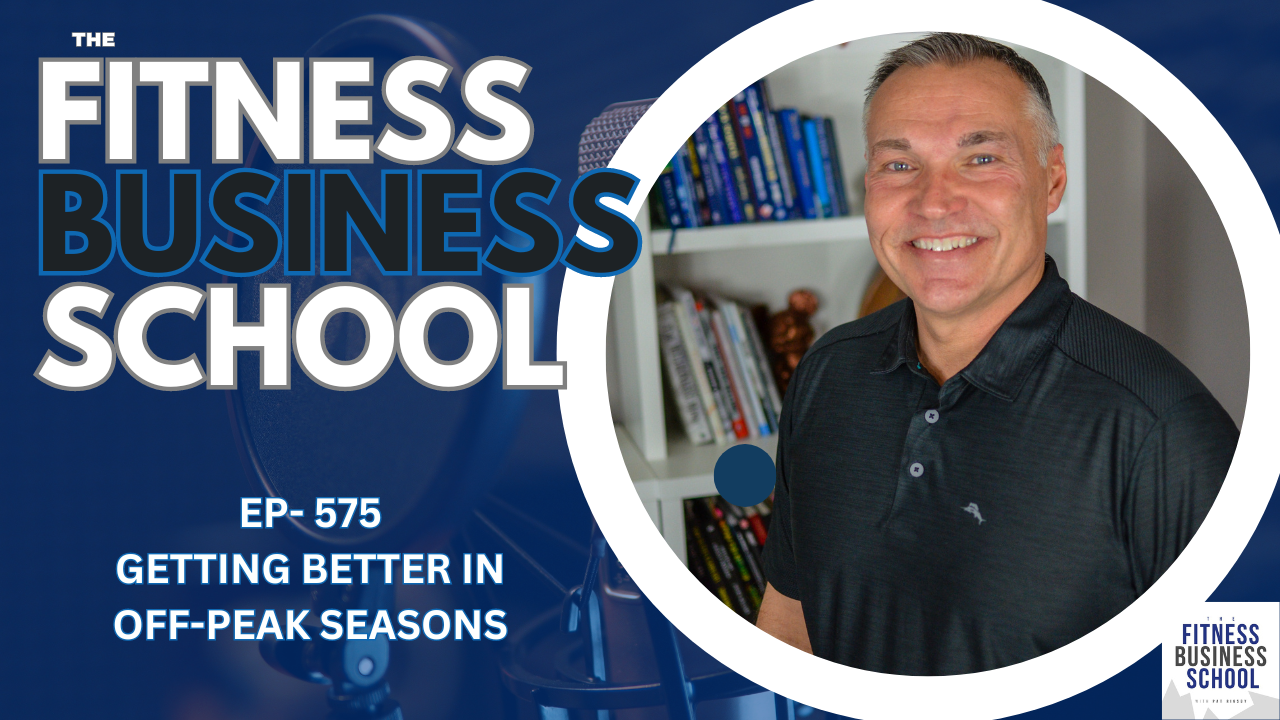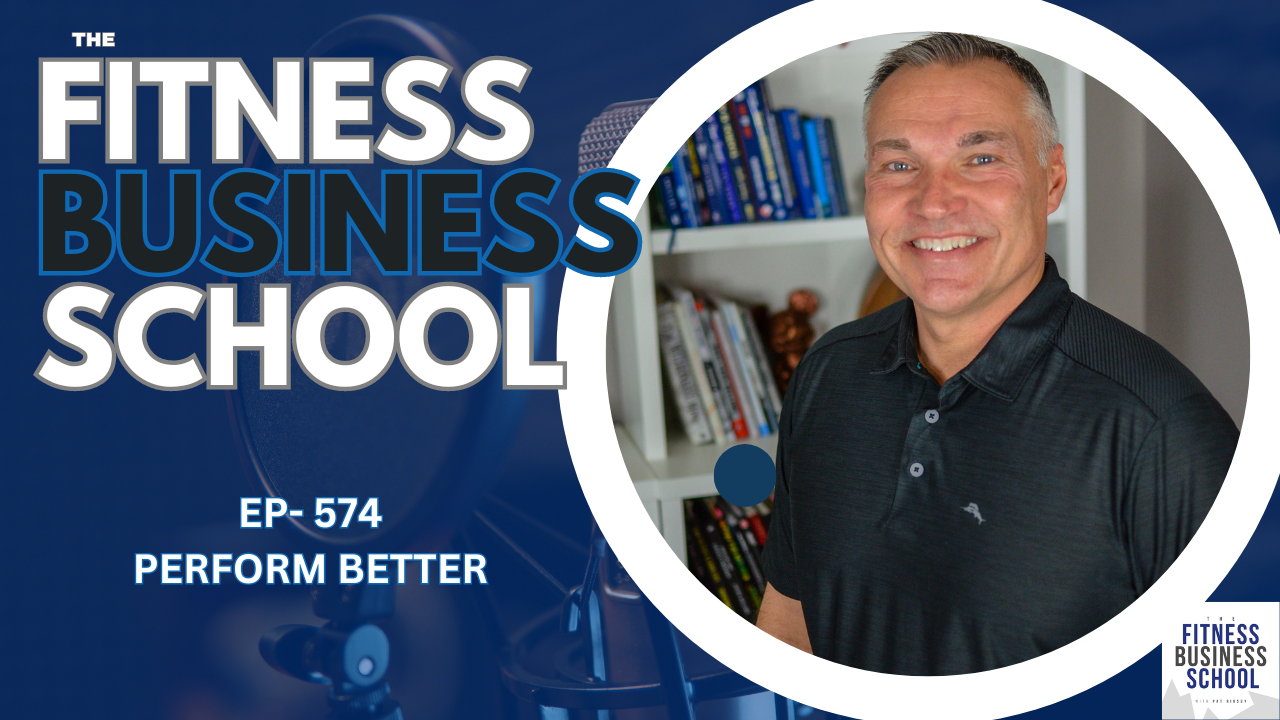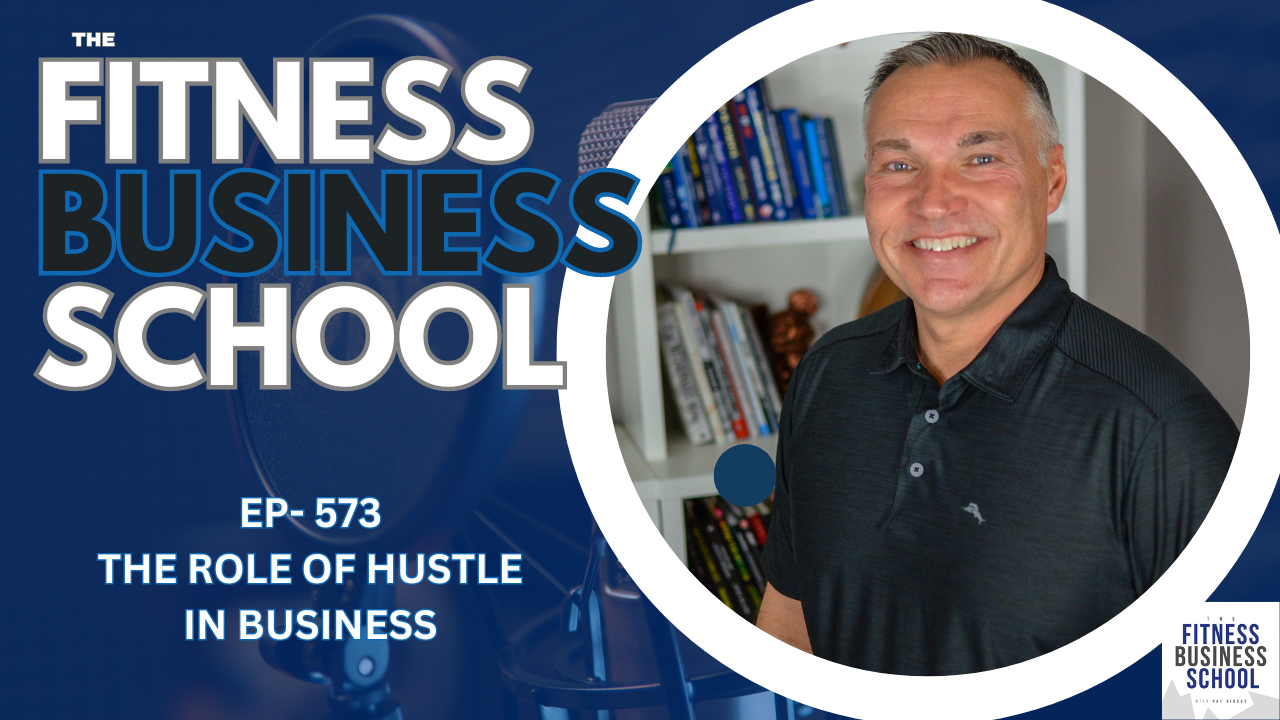Show Notes
00:00 Introduction to the Ideal Business Series
01:33 Understanding the Ideal Client
04:40 Real-World Examples of Ideal Client Focus
08:16 Systematic Marketing and Selling
13:04 Conclusion and Special Offer
Full Transcript
Hey Pat Rigsby here and in today’s episode, I’m going to kick off a four part series on creating your ideal business. Let’s get to it.
Welcome to the Fitness Business School podcast, the show for fitness business owners who
want to grow their income, increase their impact and improve their lifestyle. Be sure to listen to the end
of this episode because we have a brand new special offer exclusive for listeners. So stay tuned.
As I record this, we’re in the middle of two different ideal business mastermind type of meetings. We have our boardroom group, which is our more advanced business owners who are at that scale stage. And then we have our ideal business accelerator group, which is the people who are in more of the growth stage.
And we have two meetings. And so I’m in the buffer week in between. And because that’s on my mind and because a lot of time is spent in making sure that people have clarity and focus on creating their ideal business, I wanted to talk through the framework that I’m always internally using when I’m helping to give people guidance, when I’m helping to.
Insider feedback on where they’re trying to go. So I want to cover a couple of the pieces of this framework in each of four different episodes. So it doesn’t turn into some marathon episode, but the first is that to have your ideal business, you must serve your ideal client. Now I get it most of the time we open a business.
We don’t really have the luxury of serving a really narrow target market. We tend to serve pretty much anybody who’s willing to pay us to train them so we can pay the bills. And that’s fine in the beginning when you’re just getting out of the gates. But over time we need to narrow who we’re going to serve.
We come to learn about who We’re best at serving and we start to get some clarity about who we enjoy coaching the most. So if you want to build your ideal business, you have to hone in, you have to narrow your focus and spend time really the vast majority of your time connecting with and serving those people, the ones that you would define as your ideal clients.
Now, after that initial startup stage. Typically, what’s going to happen is you’re going to find yourself with a percentage of clients. You’d consider, Hey, these are my ideal people, the people I really get fulfillment by serving and energized by working with. And at the same time, you’re probably still going to have some people that you’re training that are, they’re fine.
They’re great people. They’re just probably not your people. And they’re there because you need to pay the bills. In your ideal business, the goal is to incrementally shift towards having virtually all of the clients that we would define as ideal. So how does this happen? In short, we need to focus on who that person is, and then we really need to work diligently and consistently on attracting them.
So how do we figure out who they are? The first step is identifying who we’re great at serving because we need to be able to deliver their desired result on a consistent, repeatable basis, and that’s number one. And then you have to be able to give that person what they want if they’re going to be an ideal client.
It’s hard to build a business around somebody that you’re not exactly great at serving. The second step is that we need to be energized by working with this person. It needs to be somebody that we look forward to working with, that we’re excited to get the coach and to serve. You can’t have your ideal business.
If you’re spending the bulk of your time with people who drain you, somebody that you tolerate working with simply for a paycheck. And again, I am very sensitive to the fact that an early stage business, a business in what I call the launch stage. That’s just part of it, right? There are some hoops that you have to jump through in the beginning.
And then as you evolve and improve, you shouldn’t be acting like a startup anymore. And this is a piece of it. So instead we want to feel like we get to work with somebody, not that we’ve got to work with them. And then third, our ideal client should be somebody that we can connect with. And there are enough of that.
We can consistently reach them and have enough. market share to build a business around serving them. So let me give you an example of maybe something that may shed some light on it. So I live in Louisville, Kentucky, and let’s say that I want to work with players, whether it’s goalies or female hockey players, maybe even a subset of hockey, not just hockey in general.
And let’s say that I love working with hockey athletes here in Louisville. There probably wouldn’t be enough of that market to actually build a business entirely around serving. Yeah, sure. I can have some specialty programs and make that a piece of what I do, but there’s probably not enough. Even if I got a hundred percent of the market share, which.
Nobody ever really does. It really wouldn’t be enough for me to build entirely around. Could I build an online business and serve that target market? Could I do something where I broadened out and said, okay, I’m even going to do an online hybrid type of business and serve the people in a two hour radius.
Maybe. That’s possible, but if I want to build an entirely local business, it’d be really challenging, probably close to impossible to do it and meet. Some real benchmarks. Now, let me give you an example of business that’s done incredibly well by building around their ideal clients, Cresty Sports Performance.
Now I’ve had Eric on, on multiple episodes. I’ve had Pete, his co owner on for an episode in the past. And they started like most businesses, they had a broader audience, but over time, they identified that baseball players were their ideal clients. And they became really great at delivering results for baseball players who wanted to improve their performance to stay healthy.
At the same time they really dove into it. They loved it. They were energized by it over time. They focused their marketing efforts on attracting that target market. Eventually by doing that great work with the clients they love serving, they position themselves as the best in their respective market.
And now they have two locations in the Florida location is really the preeminent destination for baseball players who want to maximize their performance. Yeah. And by the way, yeah, they serve other clients, but that’s not who they. Spend the bulk of their time going out and seeking. That’s not what they’re building around.
Other people just float to them organically. So that’s how this works in action. Now, do you need to work with professional athletes or something like that to put this rule into practice? No, not at all. Maybe you’re energized, but coaching people who want to lose body fat and you’re great at getting them results.
Maybe you love serving people who want to transform their bodies and feel better about themselves. Maybe you’re great at helping people who are a little bit older turn back the clock and feel younger. It’s up to you, but if you’re going to have a local business, then you need to be able to identify who that person is.
Now, I will give you a little bit of a caveat here, right? If you have a local business, You don’t have to be quite as narrow as if you had an online business because the convenience narrows things for you. The geography, the proximity narrows things for you. So even if you’re great, people probably aren’t going to commute three hours each way to train with you three days a week.
So that’s the first kind of filter I run people’s ideal business through. The second is having. A systematic approach to marketing and selling and in our industry most business owners We don’t really get started with a foundation of marketing or selling or even business in general Our background is usually in fitness or health or sports performance And we’re passionate about helping people and we want to turn it into a career because of that most of us aren’t necessarily strong out of the gates in generating leads or closing stale like closing sales.
In fact, most fitness businesses, when they open, they don’t really have any predictable way of generating new business. Now over time, businesses may establish simple and even predictable ways to generate new business. Like referral systems or having a good Google business listing. And perhaps they’ll use bring a friend days or even run some Facebook ads here and there, but it’s usually done.
In a less than consistent or predictable way. So the best businesses, right? The ideal businesses, they have a system in place to consistently generate interest through prospects and over time, compel them to become clients. So how can that work for you? The first thing you have to do is to understand the journey that happens.
In most successful marketing systems. The beginning of this is the identification of people who are interested. People raising their hands. So now you’re visible to them. They’re visible to you. Then. We build a relationship with those people through follow up, through motivating them, educating them, demonstrating how we can help until a percentage of them are ready to experience what we offer and see if becoming a client is the right fit to help them reach their goals.
Now, frankly, that’s not what most businesses do. It’s just what the successful ones do. Let’s take a look at this from maybe a different perspective and this will help shed a little bit of light on it. Think of yourself in your consumer role, right? All of us are consumers, even business owners.
So most of the time, our initial indication of interest in a product or service doesn’t line up exactly at the same moment that we’re ready to actually buy. It doesn’t matter if you’re in the market for a new house or a new car, or you could be considering hiring.
Somebody to come build a patio or something like that.
Most of the time when you’re thinking about making a meaningful purchase, and yes, our service would fall into a meaningful purchase. This is a commitment of time and money and effort and energy. Most of the time we do a little bit of research. So we begin by being interested. Then we start to think about the various options that we have, the prices, the value, the schedule.
The way things are going to fit into our life and fit into our budget. We investigate, we ask around, we do a little bit of discovery online, we look at reviews. And then, once we’re educated, once we’re comfortable, and once we have some degree of certainty, because I think that’s what everybody wants is a little bit of certainty.
Then we’re ready to make a buying decision. Now, as a business owner, our job is to get those people who are potentially our ideal clients to act the way that I just went through as a consumer. We want them to raise their hand and indicate an interest. Then we’re going to Guide them through with follow up to help them get to know how we can be the bridge from where they are to where they want to be.
And the more trust that we create, the more certainty that we inspire over time, many of them will find that we’re the best option for them. To make this a consistent marketing and selling machine, not only do we have to have a way to get people to raise their hand, but we have to have a way to follow up.
We have to have a way to move people towards us. And we have to make offers that people, Find to be almost irresistible on their timeline. And if we do that now, we can systemize it. We can have a predictable way to grow our ideal business. So that’s the first pair of filters that I run people’s businesses through when we’re at meetings, when I’m looking at who they are, when we’re talking about their issues, their goals.
And it really helps me put guardrails on any direction I give so we don’t fall into shiny objects or fad type tactics. And we’re always moving them closer towards where they want to be. Now I’ve got a handful of other kind of pieces of this filtering framework that I’m going to share in the upcoming episodes. So stay tuned and we’ll talk about creating your ideal business.
Thanks for listening to this episode of The Fitness Business School.
Before you go, I have a quick announcement:
One of of the things that we’ve been doing with our current clients is taking them through this Ideal Business diagnostic and really what it is, this checklist that allows you to pinpoint exactly what your business needs next so you can keep improving, keep growing, and build a business that you love to own, one that pays you well, one that allows you to have the impact you wanna have and one that allows you to have a lifestyle that you truly enjoy.
In this diagnostic, we walk through everything and we do an evaluation and can instantly pinpoint what you need to do next to build that business that you want. I’m going to extend this opportunity to get on with either me or my team and take you through this evaluation and fix your business’s most vital needs fast.
So if we take you through this, you’re gonna be able to make those vital changes that you need to finally have what I call your Ideal Business. If you’d be interested in going through this entirely free, risk-free diagnostic with us and learn what you already have in place, what you’re doing well and where are your greatest opportunities for rapid improvement are just shoot me an email with diagnostic in the subject line to [email protected].
Again, an email to [email protected] with diagnostic in the subject line will get
you scheduled and take you through this evaluation to help you build the business you want.

